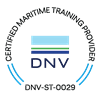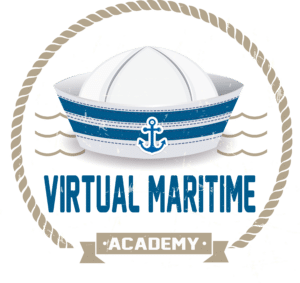In today’s fast-paced world, the need for adaptable learning solutions has never been greater. Flexible learning opportunities allow individuals to pursue essential certifications without the constraints of traditional in-person classes. One such opportunity is the 100% online PFSO (Port Facility Security Officer) and MFSO (Marine Facility Security Officer) certification courses offered by Virtual Maritime Academy, a DNV Certified Maritime Training Provider. These certifications are not only pivotal for career advancement in the maritime safety and security sector but are also DNV Certified, ensuring the highest standards are met. In this article, we will explore the benefits of flexible learning through online certification programs, specifically focusing on the PFSO and MFSO courses.
Learn More about our PFSO/MFSO Course!
Key Takeaways
- Flexible learning enables individuals to tailor their education around personal and professional commitments.
- The 100% online PFSO/MFSO certification provides accessibility to learners globally, breaking geographical barriers.
- Online certification fosters skill development through interactive and engaging digital resources.
- Our step-by-step enrollment guide simplifies the process, making it easy for anyone to begin their certification journey.
- Completing an online PFSO/MFSO certification enhances career prospects in the maritime and logistics industries.
Introduction to Flexible Learning in Certification Programs
In today’s fast-evolving maritime industry, the need for flexibility in training programs is more critical than ever. This is where Flexible Learning comes into play, especially for certification programs like the PFSO (Port Facility Security Officer) and MFSO (Marine Facility Security Officer). These programs not only offer the convenience of being 100% online but are also recognized for their quality, as evidenced by the fact that the Virtual Maritime Academy is a DNV Certified Maritime Training Provider and offers a DNV Certified PFSO Course. By choosing Flexible Learning, participants can set their own pace, fitting their studies around work and personal commitments. This flexibility enables learners to absorb the material more effectively, leading to a better understanding of security measures vital for port operations. Additionally, our online platform allows for easy access to course materials, interactive content, and direct communication with instructors, enhancing the overall learning experience. Whether you’re new to the field or looking to enhance your qualifications, our flexible approach to certification ensures that you receive the best training available without sacrificing your day-to-day responsibilities.
Key Benefits of 100% Online PFSO/MFSO Certification
In today’s fast-paced maritime industry, the need for flexibility and accessibility in training is more crucial than ever. The Flexible Learning: Benefits of Our 100% Online PFSO/MFSO Certification allows maritime professionals to enhance their skills and knowledge without the constraints of traditional classroom settings. With Virtual Maritime Academy being a DNV Certified Maritime Training Provider, students can trust that they are receiving high-quality education that meets rigorous industry standards. One major advantage is the ability to learn at your own pace; whether you are a busy professional managing your time or someone who prefers to dive deeply into course materials, the online format accommodates your schedule. Additionally, 100% online courses eliminate the need for travel, saving both time and costs associated with attending physical locations. This certification not only broadens your skillset but also empowers you to keep pace with the evolving demands of maritime security. With DNV Certified PFSO Course offerings, you gain a competitive edge in your career while enjoying the convenience and efficiency that modern technology provides.
Learn More about our PFSO/MFSO Course!
How Online Certification Maximizes Skill Development
In today’s fast-paced maritime industry, the need for flexibility in training is more crucial than ever. That’s where flexible learning comes into play, particularly through our 100% online PFSO/MFSO certification programs at the Virtual Maritime Academy. As a DNV Certified Maritime Training Provider, we offer top-notch courses designed to enhance skill development without the constraints of traditional classroom learning. With our online platform, maritime professionals can access the PFSO Course whenever and wherever it suits them, accommodating their busy schedules while ensuring comprehensive knowledge acquisition. This flexibility not only allows learners to absorb material at their own pace but also enables them to balance professional commitments with personal obligations. By choosing our DNV Certified programs, individuals not only gain essential maritime security skills but also immerse themselves in a learning experience that adapts to their unique needs, ultimately maximizing their career potential in the maritime sector.
Enrolling in Our Online Certification Program: A Step-by-Step Guide
In today’s fast-paced world, flexible learning has become a necessity for many professionals seeking to enhance their skills and advance their careers. Enrolling in our 100% online PFSO (Port Facility Security Officer) and MFSO (MarineFacility Security Officer) certification programs at Virtual Maritime Academy offers you numerous benefits that fit seamlessly into your busy lifestyle. Our DNV Certified Maritime Training Provider ensures that you receive high-quality education that meets global industry standards.
To get started with your enrollment, follow this step-by-step guide:
1. Visit the Website: Navigate to the Virtual Maritime Academy website, where you will find detailed information about the PFSO course, including course content, duration, and certification details.
2. Select Your Course: Choose the PFSO or MFSO certification program that best aligns with your career goals and interests.
3. Create an Account: Sign up for an account on our platform to access course materials, track your progress, and manage your learning schedule.
4. Complete the Enrollment Form: Fill out the enrollment form, providing necessary details such as contact information and prior qualifications.
5. Payment Options: Choose your preferred payment method for the course fees; we offer various options to make transactions as smooth as possible.
6. Start Learning: Once enrolled, you will receive immediate access to all course materials, allowing you to study at your own pace and convenience. With our flexible learning options, you can balance your education with work or personal commitments.
By enrolling in our online PFSO/MFSO certification program, you are not only enhancing your skill set but also joining a network of professionals committed to improving maritime security. Don’t miss out on the opportunity to become DNV Certified today!





